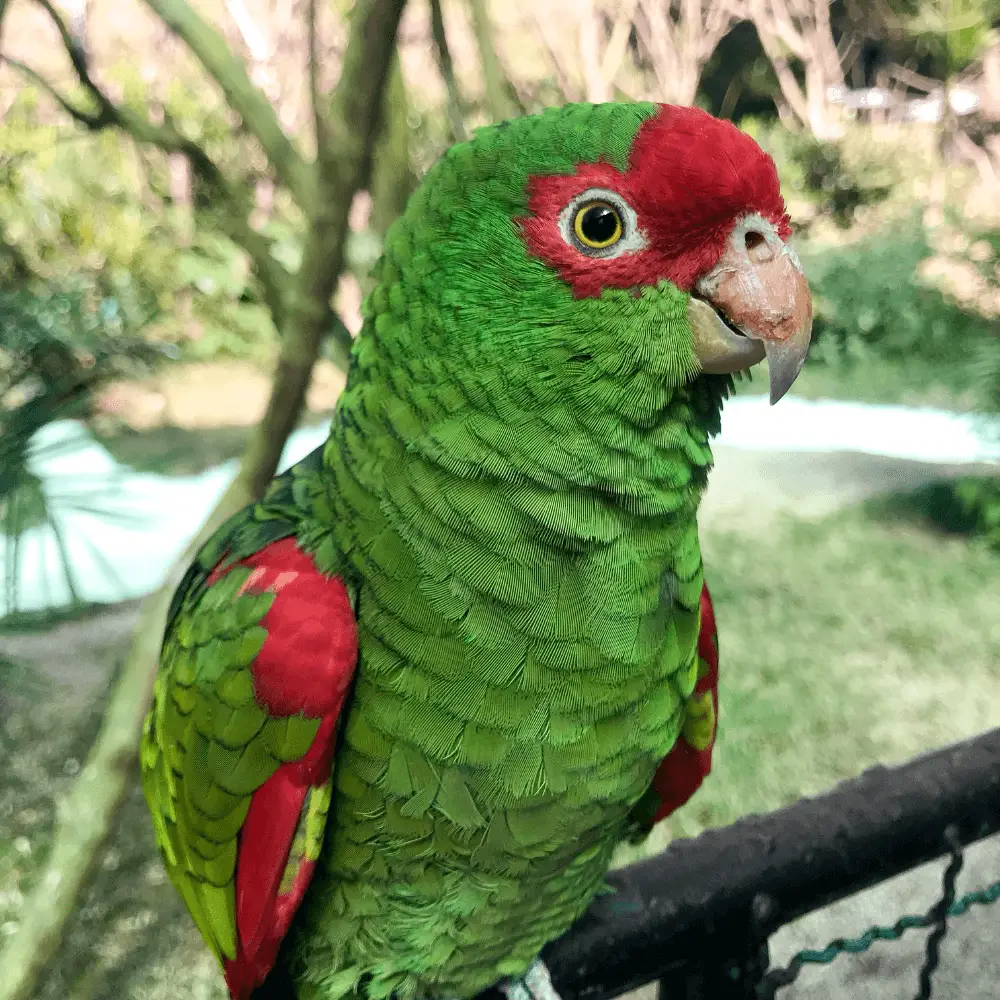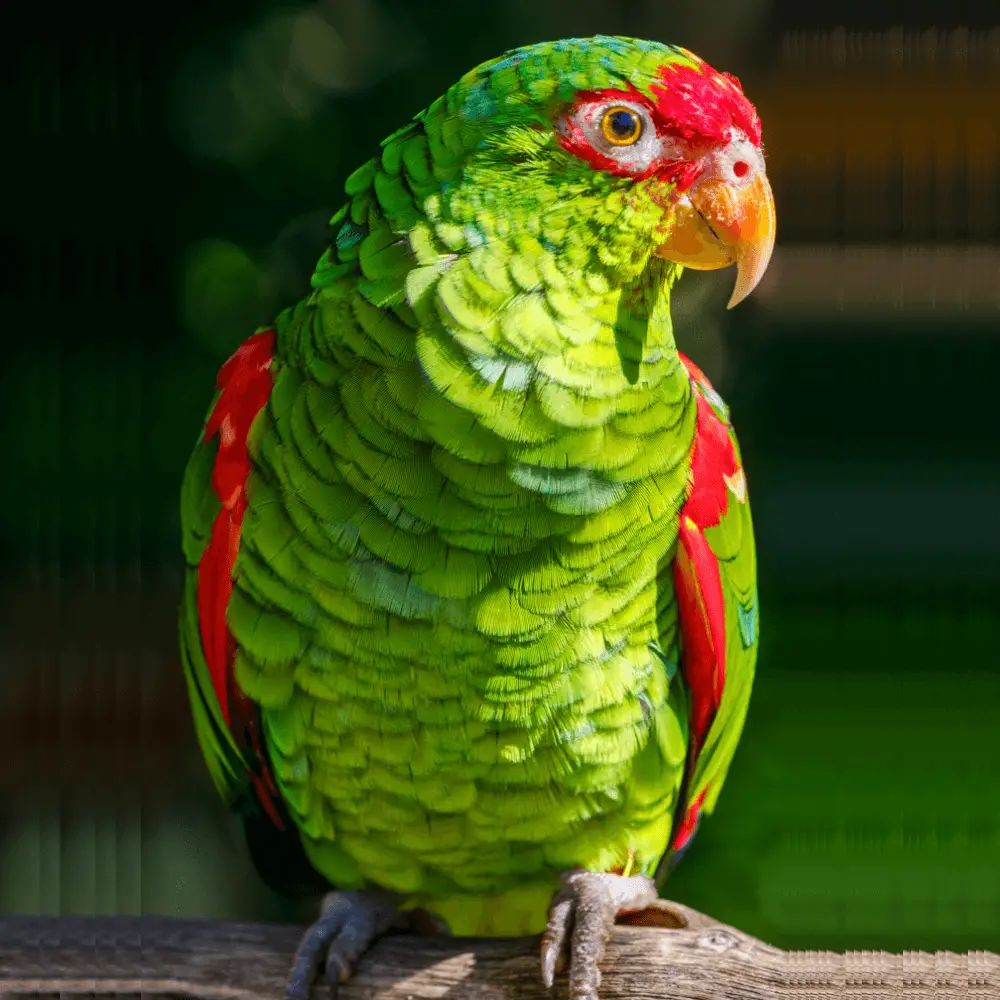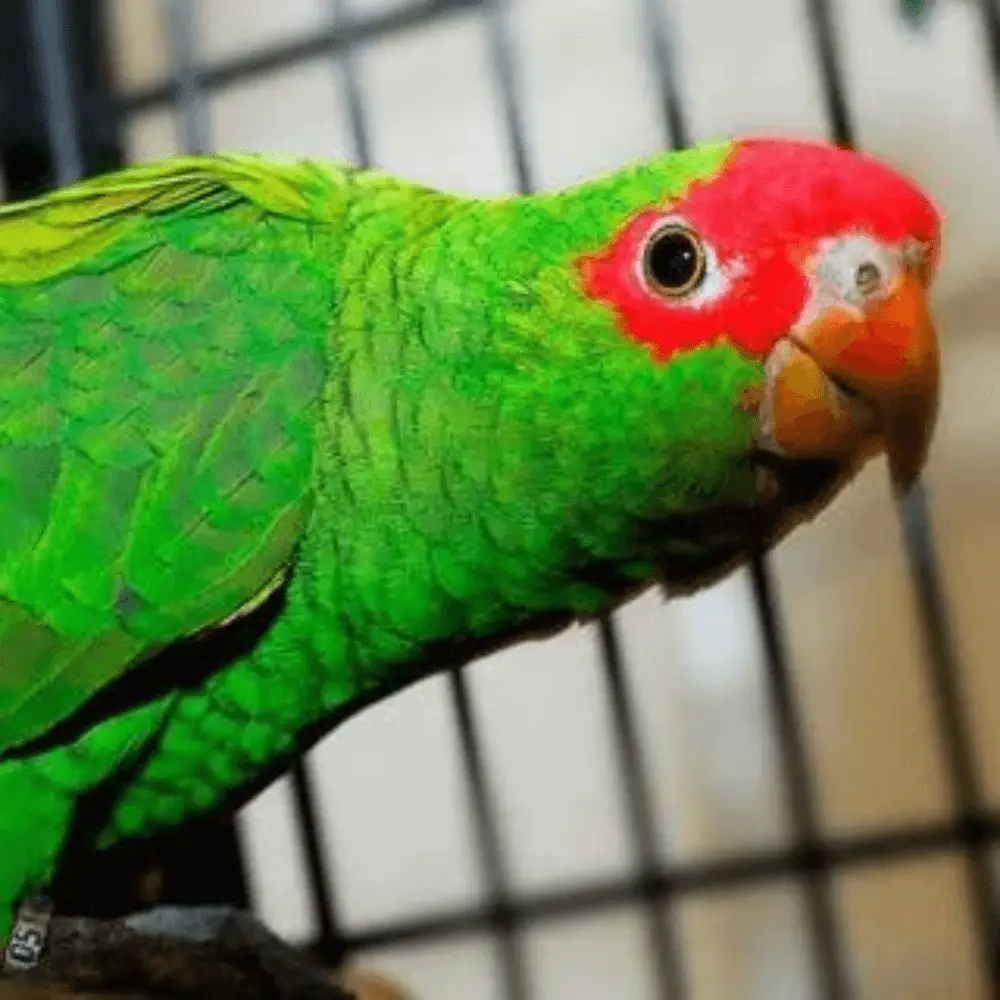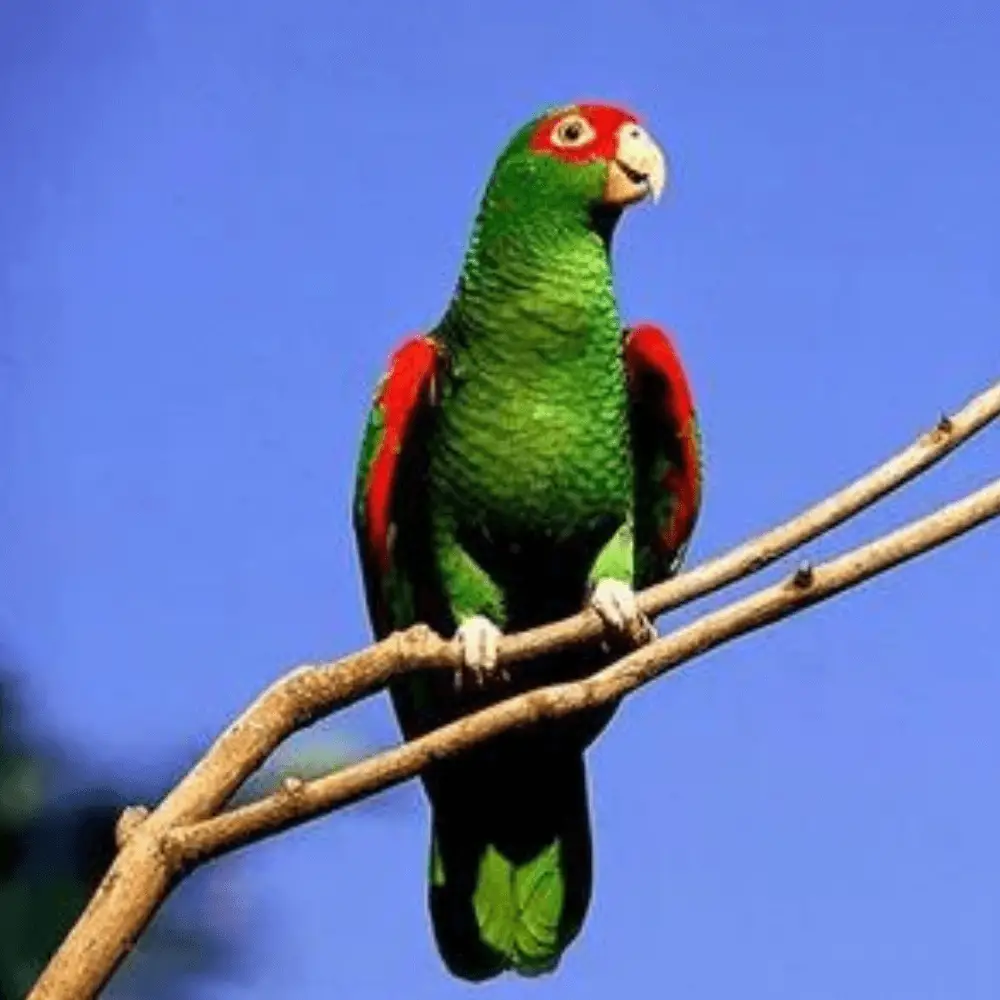Flight feathers, purple green blue tips. Below them wings are green.
The underparts are mostly green, slightly tinged with yellow, with black tips on most feathers which gives a scalloping effect; Red thighs; undertail-coverts pale yellowish green.
Green tail with a broad tip and pale yellowish-green red patches on the base of the internal webs of the outer three feathers. Bill pale yellow to pale orange based on upper jaw; orbital ring white; Orange IRIS; pardusco gray legs.
Is monotype. It is sometimes considered conspecific with Amazona tucumana, but they are at best considered to form superspecies.
- Order : Psittaciformes
- Family : Psittacidae
- Genus : Amazona
- Scientific name : Amazona pretrei
- Quote : ( Temminck , 1830)
- Protonimo : psittacus pretrei
-
Brazil, Paraguay, Argentinian
-
Silent.
-
40 years or more.
-
32cm.
Habitat

This rider is strongly associated with Araucaria angustifolia forests for use as breeding season roosts. It prefers open savanna forests and low riparian forests for reproduction, with trees and conifers of the genus Podocarpus, Scotia Yes Celtic, and where Araucaria angustifolia are absent. Most records place it at elevations between 300-1,000 m, but they are distributed and breed at lower elevations in southern Rio Grande do Sul.
They disperse in pairs during breeding but are highly gregarious outside the breeding season. They form large community concentrations, often in exotic pinus or eucalyptus plantations.
The largest winter gatherings coincide with araucaria ripening seeds. flocks of 30 a 50 birds, composed of young adults and newborns, They can meet before dispersal, from the breeding grounds to the winter quarters.
Distribution and status

Red-spectacled Amazon is endemic to South Brazil and distributed only in the states of Rio Grande do Sul and Santa Catarina ( Martinez, 1996 ). Some individuals have been recorded in the Mission forests, in the northeast of Argentina ( Chebez 1994 ) and they have recently been reported in Paraguay ( Lowcn et al., 1997 ).
Red-spectacled amazon is a Nomad type; They tend to concentrate on the remaining Araucaria forests southeast of Santa Catarina between March and June to feed on Araucaria augustifolia seed production.
During August and January, the Red-spectacled amazon are dispersed in small herds ranging from dozens to hundreds of individuals in a wide distribution across the state of Rio Grande do Sul, especially in habitats Cima da Serra Fields, Eastern Plateau, Alto Uruguay, Central Depression Yes Southeast Saws.
The reduction in the supply of Araucaria seeds may have been the cause of the change in the diet of the Aracuri-Esmeralda Ecological Station in 1991 (canton a lot of capons ) in the areas around Southeast Santa Catarina.
Here, the remaining forests of Araucaria could provide enough seeds to feed the Amazon population. Intensive cattle grazing and agriculture have nearly eradicated the Araucaria habitat. These habitat impacts reduced natural regeneration and may also have reduced the number of nest sites in old trees.
a census in 1994 estimated the total population of the Red-spectacled Amazon at 10,000 individuals, Repeated surveys have shown population sizes near 12,600 individuals in 1996. and about 16,300 individuals in 1997 ( J. Martinez in litigation 1997, N. Prestes in proceedings 1997 ).
Reproduction

The Red-spectacled amazon nests in hollow trees, for example, Casearia, Ouillaja brasiliensis Yes ficus. Itself breeds in late September to January, with young and fledglings, generally in early December in the south. Clutch 2-4 eggs.
Food
Foods reported include seeds of Araucaria angustifolia (especially important in May-August) Yes Podocarpus lambertii (important in some areas in January-February), fruits of Eugenia, Campomanesia Yes Melia.
The scheme is modified with the city and the station. They take a variety of fruits in spring and summer (October to February), among others: Cupania, Eugenia, Phytolacca, Allophylus, Nectandra, Ocotea, Campomanesia, Cytharexylum, Myrcianthes, blepharocalyx, ficus Yes Martinicensis.
The diurnal movements cover 100 km, possibly in relation to food availability.
Endangered

• Current IUCN Red List Category: Vulnerable.
• Demographic trend: Degressive.
The rationale for the Red List Category
The combination of a comparison of population estimates from 1971 to 1997 and deforestation rates over the same period suggest that the species has declined rapidly, qualifying the species as vulnerable. Current threats Habitat loss and capture suggest that this decline is likely to continue.
Justification of the trend
Una sospecha is undergoing rapid continuing population decline due to habitat destruction, degradation and fragmentation and illegal trade.

